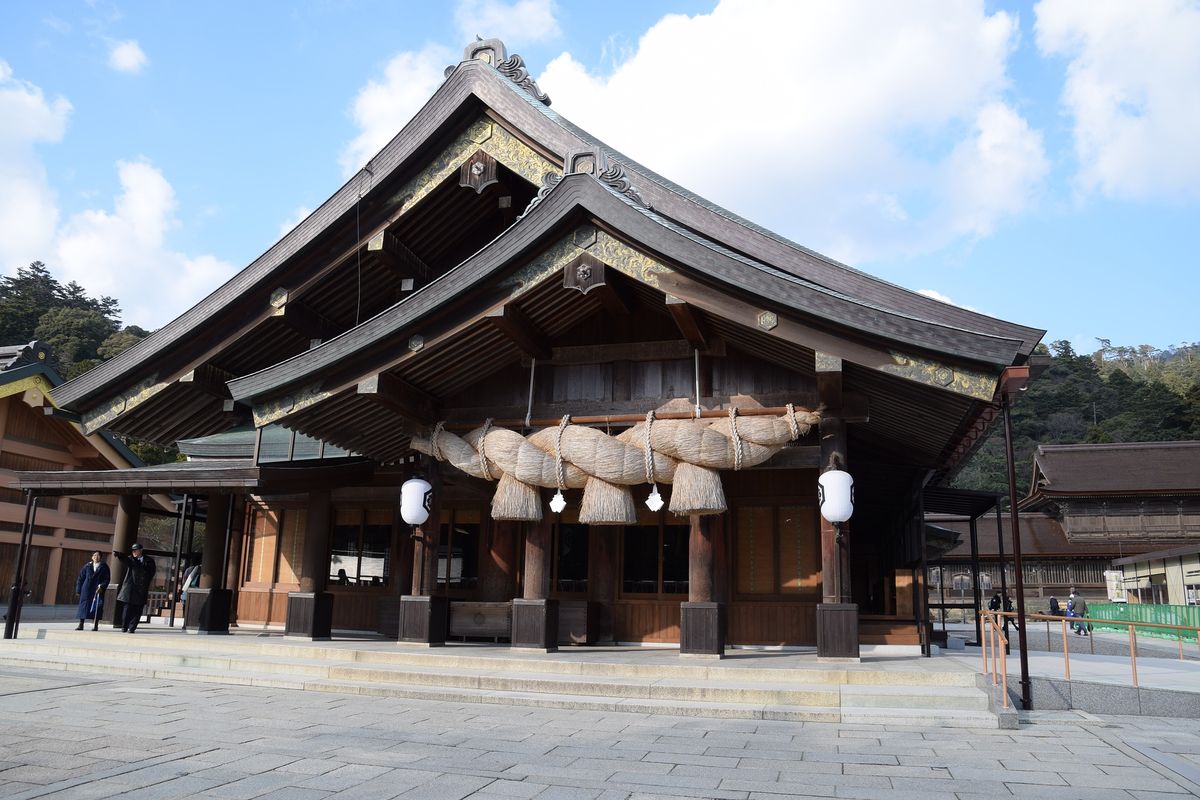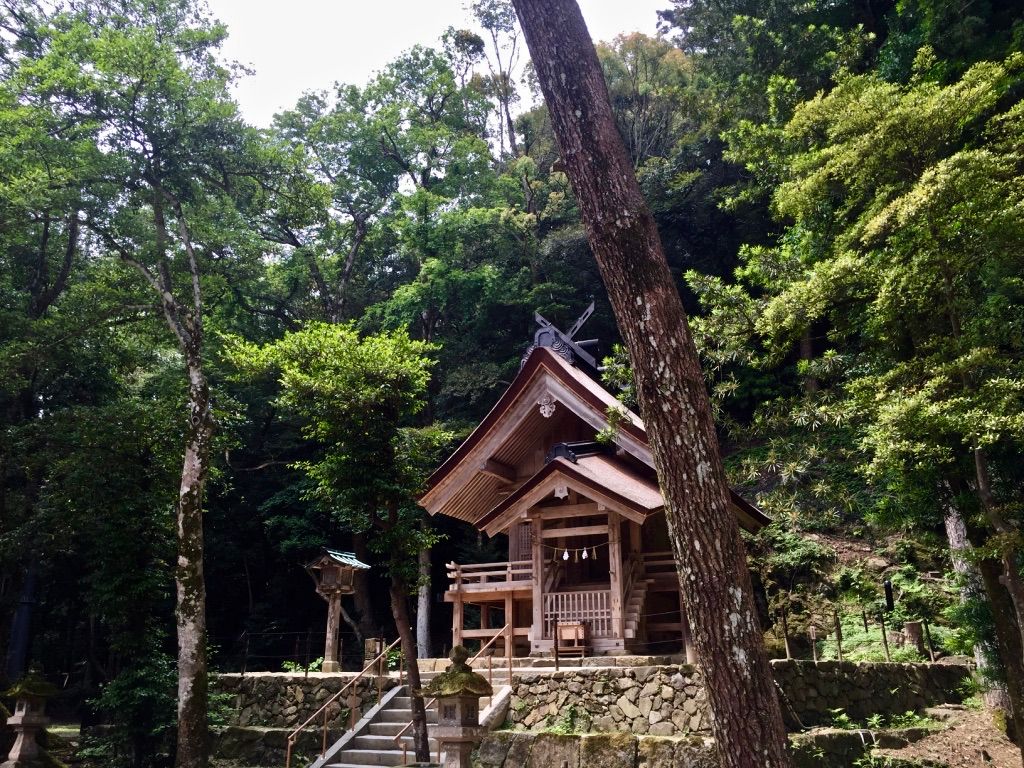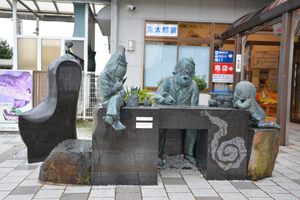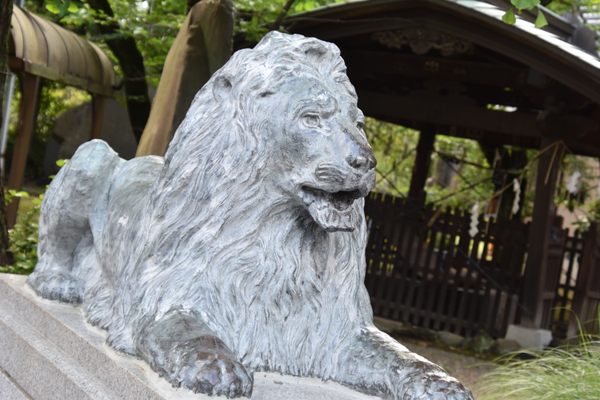About
Every fall, eight million Shintō deities from across Japan descend upon Izumo-Taisha, a historic shrine in the country’s western Shimane Prefecture, to deliberate over the fortunes of mankind for the coming year. In the temporal world, bonfires are lit on a nearby beach to welcome the gods, and Shintō priests perform a week of rituals to curry their favor in matters of life, death, and romance.
Believed to be the oldest shrine in all of Japan, Izumo-Taisha dates back to before the eighth century, though the date of its original construction is not known. The shrine was erected to honor Ōkuninushi, the deity who, in Japanese mythology, helped form the earth of Japan and who ruled from Izumo, an early seat of the clan and political power in the country. Ōkuninushi later transferred power to the sun goddess Amaterasu’s grandson, Ninigi, in exchange for which Amaterasu granted Ōkuninushi dominion over the realm of the gods—hence why Izumo-Taisha serves as the gods’ meeting place.
In recognition of the lofty status of gods above men, the shrine was originally built on a platform high atop thick beams, which was accessed via a long staircase. Izumo-Taisha was once the tallest structure in Japan, reaching approximately 48 meters in height, according to early historical records. A series of fires wiped out the original shrine, however, and in the 1200s Izumo-Taisha was rebuilt at the more modest height of 25 meters.
Today’s Main Hall dates to 1744, but a scaled-down model of the original can still be seen in Izumo-Taisha’s Treasure Hall, adjacent to the Main Hall, which also features a collection of ancient Japanese artifacts and artwork. Several smaller shrines also occupy the Izumo-Taisha grounds, as well as statues depicting Ōkuninushi’s mythology and long wooden structures, known as a jukusha, which are intended as lodging for the gods during their fall meeting.
Izumo-Taisha is notable for its taisha-zukuri architecture, the oldest style of shrine construction in Japan which predates Buddhism’s arrival to the country in the sixth century. Obvious markers of this style include the elevated Main Hall and the forked chigi, which jut skyward from the shrine’s bark roof. Izumo-Taisha is also well-known for the enormous shimenawa that decorates its Worship Hall. This sacred rope, made from braided rice straw, measures 13.5 meters in length and weighs nearly five tons, making it is the largest shimenawa in Japan.
While Izumo-Taisha might be the meeting place of the gods, it is a popular destination for mortals, too. The shrine hosts more than a dozen festivals each year, and it has been a popular site for Japanese pilgrims and tourists since the 18th century—and not just for its historic and religious significance. Long after Ōkuninushi was finished leading Izumo’s clans, he also became known as the deity of good relationships and marriage. Weddings are common at Izumo-Taisha, and lovers come from all over Japan to beseech Ōkuninushi for success in their romantic endeavors.
Related Tags
Know Before You Go
Izumo-Taisha is open year-round and can be accessed via the Ichibata Railway, or by direct bus from JR Izumoshi Station or the Izumo Airport.
Hidden Japan: Sado Island, Nara & Kyoto
Explore a different side of Japan.
Book NowCommunity Contributors
Added By
Published
September 5, 2018
Sources
- http://www.kankou-shimane.com/eng/uploads/file/guidemap02.pdf
- https://www.japan-guide.com/e/e5804.html
- http://www.japanesemythology.jp/izumo-taisha/
- https://www.japanvisitor.com/japan-temples-shrines/izumo-taisha
- https://en.wikipedia.org/wiki/Izumo-taisha
- http://mythology.wikia.com/wiki/Okuninushi
- http://mythology.wikia.com/wiki/Amaterasu
- https://japantoday.com/category/features/5-fun-facts-about-the-flag-of-japan#:~:text=5)%20The%20largest%20national%20flag,weighs%20an%20impressive%2049%20kilograms.































